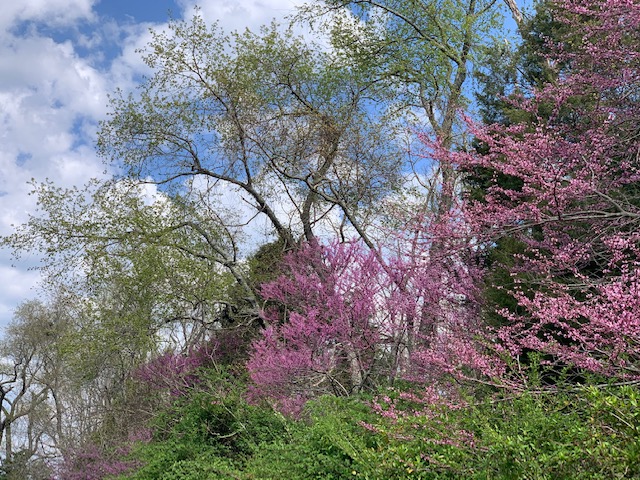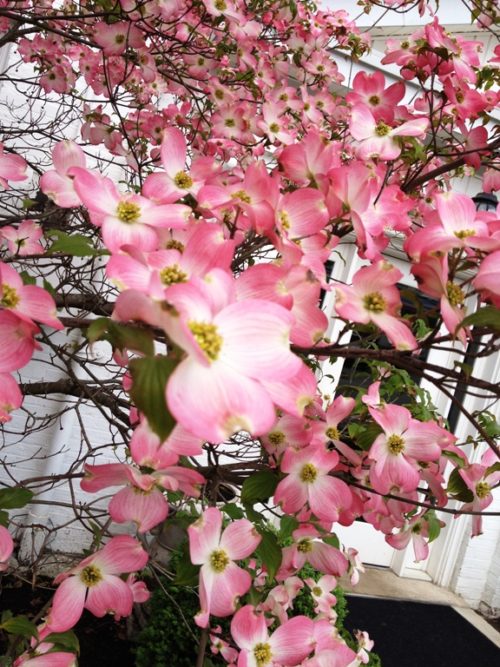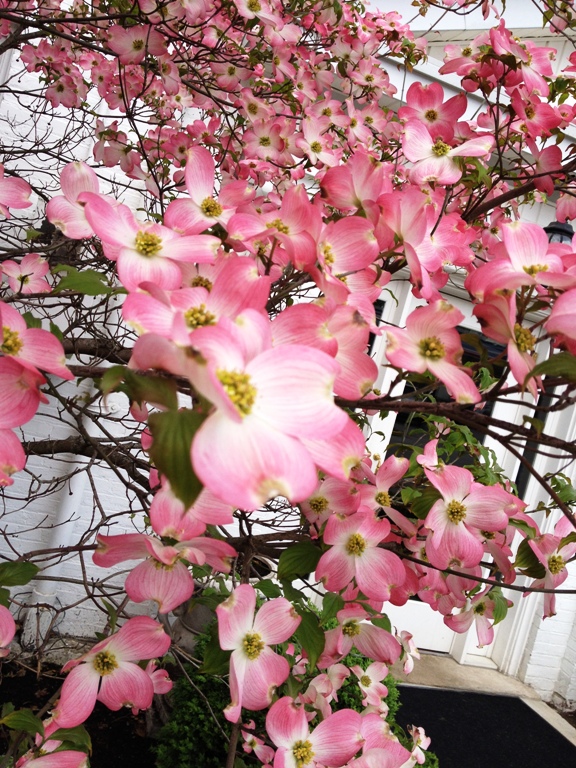What winter is this?
Once when I mentioned a “winter” in the springtime on Facebook, some people had never heard of such things. Perhaps it’s mostly something farmers or country people come up with to label the cool snaps that come every year after spring is officially here. It will warm up and give us some beautiful days and then all at once we’ll be plunged back to winter temperatures.
 That has already happened twice this spring. The first time the redbud trees were just beginning to show their purplish red buds and it got freezing cold. Actually almost set a record for April here in our area and nipped a lot of plants that had begun bravely pushing out leaves or buds. Then, as spring is wont to do, the temperatures climbed back up to even higher than a spring day normal. We all were basking in the sun and thinking planting time. But hold on! Not yet for anything but the hardiest of plants.
That has already happened twice this spring. The first time the redbud trees were just beginning to show their purplish red buds and it got freezing cold. Actually almost set a record for April here in our area and nipped a lot of plants that had begun bravely pushing out leaves or buds. Then, as spring is wont to do, the temperatures climbed back up to even higher than a spring day normal. We all were basking in the sun and thinking planting time. But hold on! Not yet for anything but the hardiest of plants.
A piece in the Farmers Almanac says that we name these “little winters” by whatever is blooming in our area at the time. Staying in tune with nature and the normal progression of the seasons was and is important to farmers. So, the old time farmers had their way of knowing when it was time to plant by whether the dogwood winter or perhaps blackberry winter had come and gone.
The ones my mom and dad and probably their moms and dads generally named were redbud winter, dogwood winter, locust winter and blackberry winter. Usually once you got past all those little winters, spring was through sliding back into winter. My dad, who had a few sheep he sheared every spring, would often add a “sheepshearing winter,” since a cold snap sometimes had those newly shorn sheep shivering.
It’s fun to hear the other names people come up with for the spring cold snaps. Farmers Almanac mentioned whippoorwill winter. That was one I’d never heard although I’m all the time mentioning whippoorwills in my books. In An Appalachian Summer I even let one of the characters explain why these birds are heard but rarely seen. That’s one of the fun parts of writing stories set in country or mountain settings. I get to let my characters experience the world or nature.
But back to the different names for spring cold snaps that my Facebook friends mentioned a few years ago. They said “snowball winter,” and I’ve remembered some cold snaps that brought snow along with them. Then there was “magnolia winter” and “tulip tree winter.” One name that made me smile was “stump winter.” That was when it got cold after you had shoved your last stump of firewood in your stove and you hadn’t planned on cutting any more wood for the stove until the next fall.
I’m calling this cold snap “dogwood winter,” although I’ve heard some others saying “redbud winter.” I would rather we just move along and get the winters over with. But I wouldn’t mind hearing that whippoorwill call. I don’t hear them the way I used to when I was a kid. I’m not sure if that’s because the house where I live now is better insulated and I don’t hear the sounds of nature as well at night or if there just aren’t as many whippoorwills on my farm now. I do hear plenty of coyotes, but I’ve never heard of “coyote winter.”
So what do you say? Have you got a name for the cold snaps in spring?



Comments 8
When I was younger, I used to hear about “Linen britches” winter. It usually was around the time that men wore lighter weight trousers… maybe Easter. It also seems like I have heard of a “Sarvis berry winter, too. Funny that we had a bush of those not far from the outhouse. Thankfully, on the upper side so their sweetness did NOT come from THAT type of fertilizer. I sure would love to taste some of those berries again.
Author
I’ve heard people say linen britches winter too, Sandra. Interestingly enough, the Farmer’s Almanac piece that I happened across mentioned “linsey-woolsey winter.” That was when the old-timers put away their woolly underthings.
I’ve never eaten a sarvis berry. I’ll have to look that up to see if I’ve just been missing out or there aren’t any of those around here or if we call them something else.
I was born in Pennsylvania. I have never seen Pink Dogwood Bushes before – they were always white when I was growing up.
Author
The pink dogwoods are lovely, Linda. They aren’t wild trees but nursery trees people have planted. They look great paired with the white dogwoods in a yard. I do have some dogwoods growing wild in the woods on my farm. And they are always white.
I love to see the renewal of life in the spring and just yesterday I spotted a hummingbird, so how about hummingbird winter? I love all your references in your books to good, down home living and nature! The whippoorills are a favorite of mine too. We hear the chuck wills widow where we are and that always reminds me of the time my dog found chuck wills widow with a small chick in the forest (very camoflaged and barely noticeable) sitting on a low brand near the ground. She flew just above the head of my dog in an erratic pattern to draw her away, and continued this behavior to lure the dog from her chick. It was amazing to see!
Author
Glad you like my country settings, Amy. That’s what I know best although I don’t live in the mountains. I do live in the country. Thanks for sharing about your dog finding the chuck wills widow. That sounds like how the whippoorwills are camoflaged too. You were lucky to get to see that nature event and I’m assuming the dog and bird both did okay. Killdeer do that too. They nest on the ground and if a predator comes close to their nests, they will pretend to have a broken wing to lure the predator away from the nest or their chicks. Nature is amazing.
I haven’t seen a hummingbird yet but it’s about the time when they usually come back. I’ll have to clean up my feeder and put it out. Sometimes the first hummingbird will come to my office window and hover there as if reminding me that it’s time to start feeding them.
I call them “welcomed cold snaps.” It gets so humidly hot here in the Spring and Summer that when those plummeting temperatures rear their heads, I say, “Welcome!” The plants, trees, flowering bushes in these parts aren’t affected because it never gets below freezing-I say never but that’s not entirely true. One Spring in the 80’s it snowed here on the MS Gulf Coast! Brrrr ❄️💨❄️
Author
I suppose location really matters, Karen. Here in Kentucky, we’re ready for spring after a cold winter. So, when it starts warming up we want it to stay. Also, a week of warm weather will encourage our plants and trees to rush the season. It’s really better if it will still cool until spring weather is supposed to be here. This year I thought it had and then we had that record cold the first of April that did nip some plants. Last year some of our trees had to leaf out three times and most fruit trees didn’t produce because they were blooming when we had a frost. The weatherman said we might have frost later this week but it probably won’t hurt things if it doesn’t get too cold. I can see why you’d like the cool snaps if you were having humid heat.